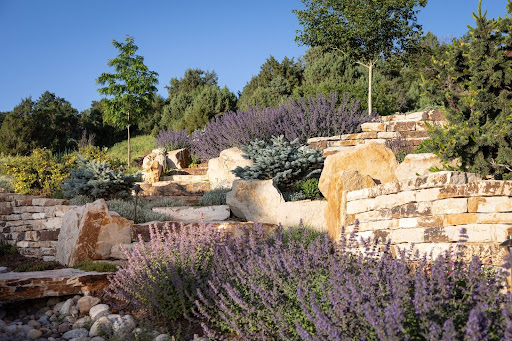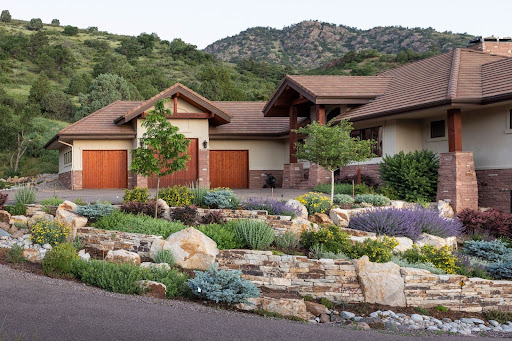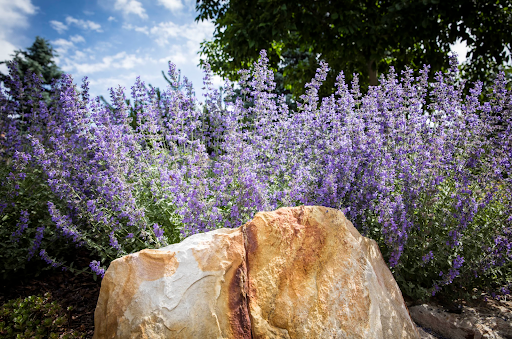As water conservation becomes increasingly crucial, especially in arid regions like Colorado, homeowners are turning to drought-tolerant landscaping, or xeriscaping, to create sustainable and beautiful outdoor spaces. Xeriscaping involves using drought-resistant plants and efficient irrigation methods to reduce water usage while maintaining an attractive landscape. Xeriscaping is beneficial for several reasons, making it an excellent choice for Colorado residents. Keep reading below to learn more about drought-tolerant plants and how they can benefit Colorado homeowners.

8 Reasons Why a Drought-Tolerant Landscape Is Beneficial for Colorado Homeowners
As water conservation becomes increasingly important, especially in arid regions like Colorado, drought-tolerant landscaping offers a practical and attractive solution. Here are some key advantages of adopting a drought-tolerant landscape for your Colorado home.
Water Conservation
One of the most significant benefits of drought-tolerant landscaping is the reduction in water usage. Traditional lawns and gardens require a substantial amount of water, which can be a scarce resource in Colorado. By incorporating drought-resistant plants and efficient irrigation systems, you can significantly reduce water consumption, helping conserve this precious resource.
Lower Maintenance
Drought-tolerant landscapes are designed to thrive with minimal care. Unlike traditional gardens that need frequent watering, fertilizing, and mowing, drought-resistant plants are typically hardier and require less upkeep. This means you can enjoy a beautiful, vibrant garden without the constant maintenance.
Cost Savings
Reducing your water usage benefits the environment and lowers your utility bills. Over time, the savings on water costs can be substantial. Additionally, the lower maintenance requirements of drought-tolerant landscapes mean you spend less on gardening supplies, fertilizers, and professional lawn care services.
Environmental Benefits
Drought-tolerant landscaping supports local ecosystems by using native plants adapted to the region’s climate. These plants provide habitat and food for local wildlife, including birds, bees, and butterflies. Moreover, by reducing the need for chemical fertilizers and pesticides, you contribute to a healthier environment and minimize the runoff of harmful substances into local waterways.
Resilience to Colorado’s Climate
Colorado’s climate can be challenging for traditional gardens, with its hot, dry summers and occasional droughts. Drought-tolerant plants are specifically chosen for their ability to withstand these conditions, ensuring your landscape remains lush and attractive even during dry spells. This resilience means your garden will look its best year-round, regardless of the weather.
Aesthetic Appeal
Drought-tolerant landscapes can be incredibly beautiful, offering diverse colors, textures, and shapes. From the vibrant blooms of native wildflowers to the striking forms of succulents and grasses, many options exist to create a visually stunning garden. Plus, these landscapes can be designed to complement the natural beauty of Colorado, blending seamlessly with the surrounding environment.
Increased Property Value
A well-designed, drought-tolerant landscape can boost your home’s curb appeal and
increase its market value. Prospective buyers often appreciate the beauty and practicality of such gardens, seeing them as a low-maintenance, eco-friendly option that enhances the overall attractiveness of the property.
How to Prepare Your Landscape to be Drought Tolerant
Transforming your landscape to be drought-tolerant is a smart move, especially in regions like Colorado where water conservation is essential. By incorporating xeriscaping and hardscaping principles, you can create a beautiful, sustainable, and low-maintenance garden that thrives even during dry periods. Here are some effective ways to prepare your landscape for drought tolerance.
Assess Your Soil
- Soil Testing: Start by testing your soil to understand its composition and drainage properties. Soil with good drainage is crucial for drought-tolerant landscaping. You can improve soil quality by adding organic matter like compost, which enhances water retention and provides essential nutrients to plants.
- Mulching: Apply a thick layer of mulch around your plants. Mulch helps retain soil moisture, suppresses weeds, and regulates soil temperature. Organic mulches, such as wood chips or straw, gradually decompose, enriching the soil.
Choose Drought-Resistant Plants
- Native and Well-Adapted Plants: Select plants that are native or well-adapted to Colorado’s climate. Native plants require less water, are more resistant to local pests, and support local wildlife. Examples include Rocky Mountain penstemon, yucca, and blue grama grass.
- Drought-Resistant Varieties: Incorporate drought-resistant varieties of flowers, shrubs, and trees. These plants are specifically bred to thrive with minimal water. Popular choices include lavender, sage, and juniper.
Implement Xeriscaping Principles
- Efficient Irrigation: Design and install an efficient irrigation system, such as drip irrigation, that delivers water directly to the root zones. Drip systems minimize water waste and ensure that plants receive the moisture they need.
- Hydrozoning: Group plants with similar water needs together in hydrozones. This strategy allows you to water each zone appropriately, ensuring that plants receive the right amount of water without excess waste.
- Minimal Lawn Areas: Reduce the size of your lawn or eliminate it altogether. Traditional lawns are water-intensive and require frequent maintenance. Instead, opt for ground covers, native grasses, or artificial turf that require less water and care.
Incorporate Hardscaping Elements
- Patios and Pathways: Introduce hardscaping features like patios, pathways, and decks to reduce the amount of water-dependent green space. These elements not only conserve water but also add functionality and aesthetic appeal to your landscape.
- Rock Gardens: Create rock gardens using drought-tolerant plants and decorative stones. Rock gardens are visually striking and require minimal water and maintenance. They can also provide excellent drainage, which benefits many drought-resistant plants.
- Retaining Walls: Build retaining walls to manage slopes and create terraced planting areas. Retaining walls help control erosion and water runoff, allowing for better water management in your garden.
Optimize Water Management
- Rainwater Harvesting: Install rain barrels or other rainwater harvesting systems to collect and store rainwater for irrigation. This method provides an additional water source during dry periods and reduces your dependence on municipal water supplies.
- Greywater Systems: Consider installing a greywater system to reuse water from household activities like laundry and dishwashing. Greywater can be treated and used to irrigate your landscape, further conserving fresh water.
Regular Maintenance
- Weeding: Keep your landscape free of weeds, as they compete with your plants for water and nutrients. Regular weeding helps ensure that the water you use benefits your chosen plants.
- Pruning and Mulching: Regularly prune plants to maintain their health and shape. Reapply mulch as needed to continue protecting the soil and retaining moisture.

Xeriscaping Services in Colorado
Adopting a drought-tolerant landscape in Colorado is a smart and sustainable choice that offers numerous benefits, from conserving water and reducing maintenance to enhancing the beauty and value of your property. By following xeriscaping and hardscaping principles, you can create a resilient, attractive outdoor space that thrives in Colorado’s unique climate. Contact C&H Landscaping at (303) 988-1873 for professional assistance in transforming your garden. Our experts are here to help you design and implement a stunning and sustainable landscape, ensuring you can enjoy its benefits for years to come.

